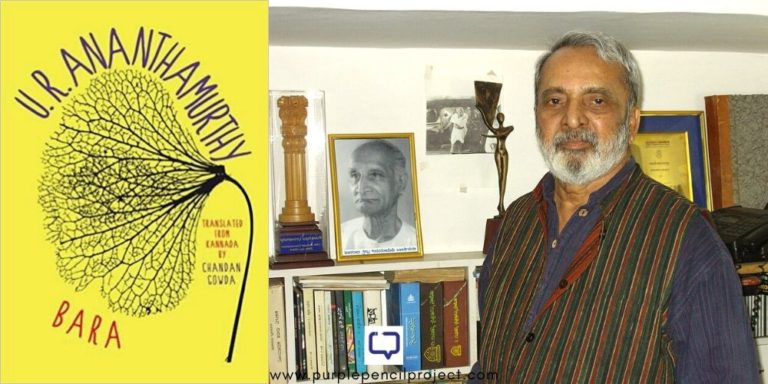Kaustav Das reviews Burn Down Your House: Provocations From Kabir by Shabnam Virmani (published by Speaking Tiger, 2024).
In all places, I find my kin
– Kabir, Burn Down Your House by Shabnam Virmani
In all places, I meet my own
I’m in all, all are in me
I’m so many, and yet
Alone
Drawing on the rich oral traditions of Kabir’s teachings from various regions in India, Shabnam Virmani presents a compilation of translated and transcribed dohas in her book Burn Down Your House: Provocations from Kabir.
Recommended Reading: A Ray of Hope: Poetry Trends in Calcutta
Kabir’s Spirituality, Poetics and Politics
Kabir, the weaver, who is believed to have lived in the cultural heritage Varanasi during the 15th century, offers timeless wisdom for today’s generation. His soul and body poems bridge protest and activism, forming the Kabir Panth—a movement intertwined with Buddhism and secularism that breaks social and caste hierarchies over religious fanaticism. This ‘bitter pill’ is hard to swallow, but we need to savour it. Kabir’s verses enlighten us, transforming homogeneity into heterogeneity and shattering narrow mindsets and social evils.
He asks, “What makes you a Brahmin?” and critiques learned ignorance and the pursuit of external validation. In his poems, Ram, Hari, and Allah coexist; his concept of the divine transcends fanatic portrayals: “Ram is a fire hidden in every heart.”
Kaaba became the city of Kashi
– Kabir, Burn Down Your House by Shabnam Virmani
And Ram became Rahim
The coarse turned to a subtle flour
When Kabir sat down to eat
[…]
Hindus die with ‘Ram’ on their lips
Muslims cry ‘Khuda’ and go
They endure, who drop the two
And take another road
Recommended Reading: 14 Recommended Translated Poetry Books in India
The Soul-Body Concept
The “Dehatatya” genre is a folk tradition in the Bhakti and Sufi movements that explores the seeking of the divine within the body. Kabir’s disenchantment is not nihilistic; he acknowledges the eternal truth of death and decay, accepting that we will eventually succumb to it. He explores the parallel existence and collaboration of life and death, the concept of un-belonging, and the illusion of permanence. Kabir is interested in truth, not beliefs about truth, and advocates surrendering to the world.
The Chinese philosophy of Taoism finds affinity with Kabir’s term “Sahaj,” a resolution and humility that embodies non-egoistic self-assurance, allowing the world to prevail. A drifting mind harbours negativity, and to tackle this, Kabir provokes us to slay the recalcitrant mind and urges us to learn meditation to break the illusion.
What to say of this world, Kabir
– Kabir, Burn Down Your House by Shabnam Virmani
Now bitter, now sweet
Yesterday, your wedding banquet
Today, your funeral feast
Attachment and Detachment
Kabir’s dohas explore yogic concepts and the movement of the soul through the senses, physical experiences, and desires. “In this world-baazaar, who did you do business with? What did you trade in? What did you earn, what did you lose?” He delves into detachment and longing within the periphery of love and belonging. Kabir often masks reality, evoking a sense of absence and nothingness, and contemplates the cycle of life, love, detachment, and death in solitude.

Attachment, or Maaya, deludes and cages individuals; no one is free from its hold, as it encompasses all of Prakriti (or nature). The emotional baggage of humans, entwined with karma and ego stories, burdens us. Kabir urges us to let go of this emotional attachment, acknowledging that what’s done cannot be undone. He provokes us to settle for less and draws us to the power of reducing our desires and attachments.
Kabir says this world is blind
– Kabir, Burn Down Your House by Shabnam Virmani
Like a cow that’s utterly sightless
Her calf is long dead and gone
She stands there, licking its carcass
Multilayered Philosophies
Kabir’s words contain metaphors that explore soul-body dynamics, consciousness, and human imperfections. His poems address multiple dualities and follies that fragment our being, urging us to motivate ourselves to navigate the outer world and its vastness beyond our limitations.
Common metaphors and images in Kabir’s poetry include ghats and clay pots, representing perishing, desolation, and emptiness—reflecting human suffering and the birth-death cycle. The sense of decay and the concept of death are prevalent in his provocations, making his poems metaphorical, ambiguous, and multilayered. The ten doors are a recurring image, symbolizing the afterlife and companionship in death.
Recommended Reading: Poetry meets Music in New Folk Album ‘Rang’
In this age of darkness, Kabir’s metaphorical poems illuminate wisdom and oneness that we must integrate within ourselves. The recurring motifs of red and dye symbolize shedding prejudice and embracing wisdom. His imagery is profound, as are his hyperboles, highlighting the joy of presence and the quest for liberation. He urges us to act in the moment, for it cannot be held forever.
In a cage of ten doors
– Kabir, Burn Down Your House by Shabnam Virmani
A bird of air abides
What a wonder that it stays
That it flies
Is no surprise
The Drawback of Kabir and Virmani’s Literary Prowess
Kabir’s provocations are often seen as sexist and misogynistic, portraying women as evil. However, Virmani provides multiple interpretations of his poems to avoid problematic translations of Kabir’s original metaphorical words. In her author’s note, she delves into the complexities of translating and transcribing Kabir’s words.
Through her notes and the original poems included at the end, we can see how meticulously Shabnam Virmani’s work reflects her years of research-oriented study on Kabir and the Bhakti movement. Nothing is lost in the process of transferring the oral sources to paper, as Virmani’s interpretations are woven with popular ones, ensuring the essence of Kabir’s poetry is preserved.
Recommended Reading: 15 Recommended Translated Classic Literature in India
Fallacy is a female fatale
– Kabir, Burn Down Your House by Shabnam Virmani
Seducing all men, foolish and smart
They scramble but can’t escape
Her shower of poison darts
Conclusion
Kabir is not just a Sufi or a poet; he represents an idea, a way of living that explores beyond what is visible. Kabir’s voice transcends radicalism, inspiring millions around the world. His teachings on mindful consumption starkly contrast with the excesses of the modern digital world, emphasizing the importance of balance without losing oneself. Shabnam Virmani’s Burn Down Your House is a book to be read multiple times, at every phase of life, to interpret and continually gain new insights into Kabir’s teachings differently.
Have you read this book on Kabir’s timeless wisdom and the depths of his spiritual, poetic, and philosophical teachings? We’d love to hear your thoughts in the comments below!





















